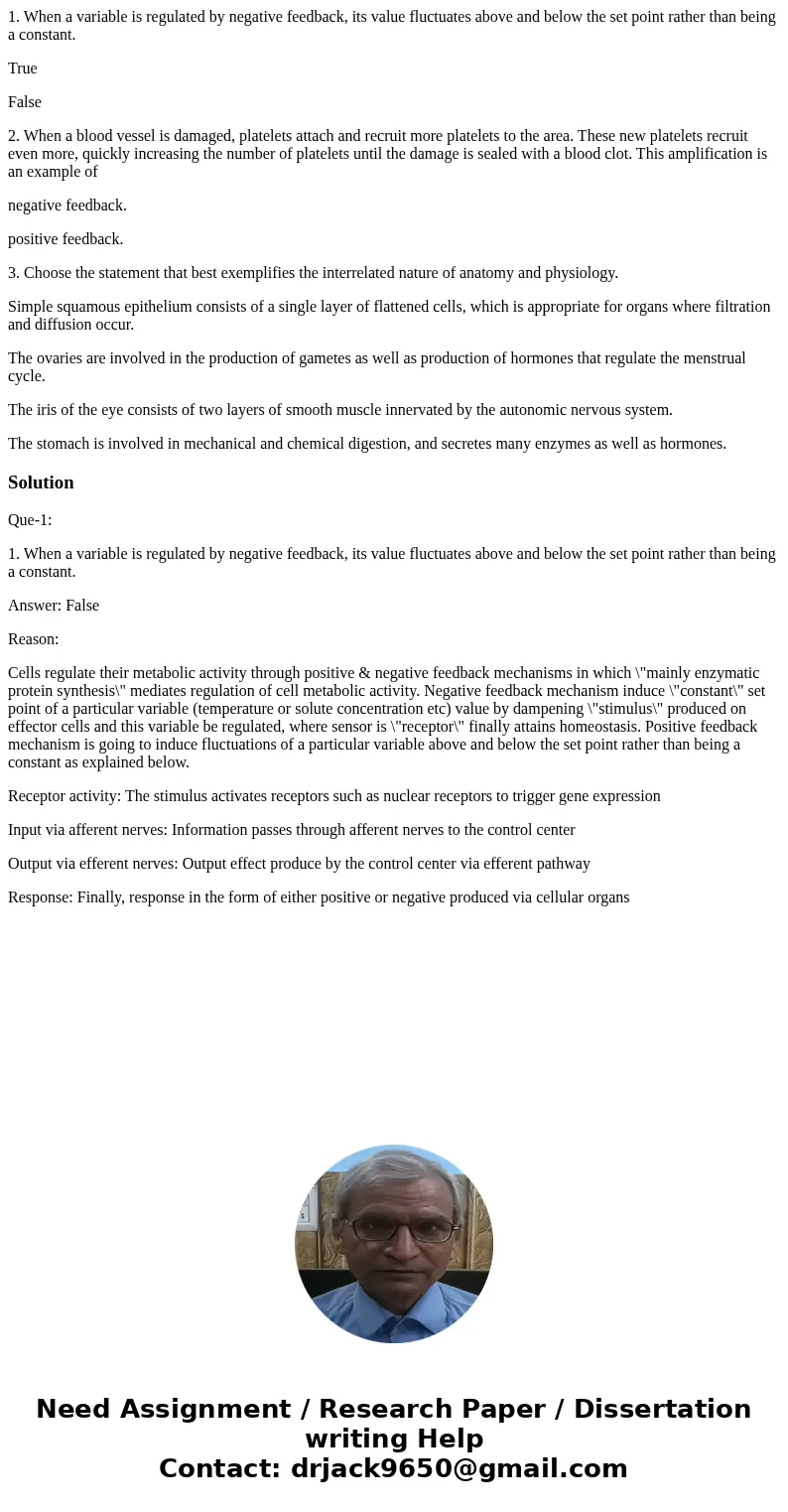1 When a variable is regulated by negative feedback its valu
1. When a variable is regulated by negative feedback, its value fluctuates above and below the set point rather than being a constant.
True
False
2. When a blood vessel is damaged, platelets attach and recruit more platelets to the area. These new platelets recruit even more, quickly increasing the number of platelets until the damage is sealed with a blood clot. This amplification is an example of
negative feedback.
positive feedback.
3. Choose the statement that best exemplifies the interrelated nature of anatomy and physiology.
Simple squamous epithelium consists of a single layer of flattened cells, which is appropriate for organs where filtration and diffusion occur.
The ovaries are involved in the production of gametes as well as production of hormones that regulate the menstrual cycle.
The iris of the eye consists of two layers of smooth muscle innervated by the autonomic nervous system.
The stomach is involved in mechanical and chemical digestion, and secretes many enzymes as well as hormones.
Solution
Que-1:
1. When a variable is regulated by negative feedback, its value fluctuates above and below the set point rather than being a constant.
Answer: False
Reason:
Cells regulate their metabolic activity through positive & negative feedback mechanisms in which \"mainly enzymatic protein synthesis\" mediates regulation of cell metabolic activity. Negative feedback mechanism induce \"constant\" set point of a particular variable (temperature or solute concentration etc) value by dampening \"stimulus\" produced on effector cells and this variable be regulated, where sensor is \"receptor\" finally attains homeostasis. Positive feedback mechanism is going to induce fluctuations of a particular variable above and below the set point rather than being a constant as explained below.
Receptor activity: The stimulus activates receptors such as nuclear receptors to trigger gene expression
Input via afferent nerves: Information passes through afferent nerves to the control center
Output via efferent nerves: Output effect produce by the control center via efferent pathway
Response: Finally, response in the form of either positive or negative produced via cellular organs

 Homework Sourse
Homework Sourse